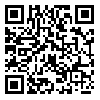Volume 12, Issue 4 (Oct & Nov 2018)
payavard 2018, 12(4): 273-285 |
Back to browse issues page
Download citation:
BibTeX | RIS | EndNote | Medlars | ProCite | Reference Manager | RefWorks
Send citation to:



BibTeX | RIS | EndNote | Medlars | ProCite | Reference Manager | RefWorks
Send citation to:
Safdari R, Nasli Esfahani E, Rostam Niakan Kalhori S, Mosadeghi Nik M. Informational Elements Requirements for Managed Care of Diabetic Foot Patients. payavard 2018; 12 (4) :273-285
URL: http://payavard.tums.ac.ir/article-1-6601-en.html
URL: http://payavard.tums.ac.ir/article-1-6601-en.html
1- Professor, Health Information Management Department, School of Allied Medical Sciences, Tehran University of Medical Sciences, Tehran, Iran
2- Assistant Professor, Endocrinology and Metabolism Research Center, Tehran University of Medical Sciences, Tehran, Iran
3- Associate Professor, Health Information Management Department, School of Allied Medical Sciences, Tehran University of Medical Sciences, Tehran, Iran
4- Master of Science in Medical Informatics, School of Allied Medical Sciences, Tehran University of Medical Sciences, Tehran, Iran ,mahsanik.medinfo@gmail.com
2- Assistant Professor, Endocrinology and Metabolism Research Center, Tehran University of Medical Sciences, Tehran, Iran
3- Associate Professor, Health Information Management Department, School of Allied Medical Sciences, Tehran University of Medical Sciences, Tehran, Iran
4- Master of Science in Medical Informatics, School of Allied Medical Sciences, Tehran University of Medical Sciences, Tehran, Iran ,
Abstract: (3366 Views)
Background and Aim: Diabetic foot ulcer is one of the most painful complications of Diabetes and affects various aspects of a person's life. Therefore, involvement of the patient in self-care can minimize its complications. The purpose of this study was to identify the effective factors in the Diabetic foot self-management for designing a managed-care based app for people with Diabetes who have risk factors for foot ulcers or wound infections.
Materials and Methods: In this cross-sectional study all physicians and nurses employed at ‘Diabetes and Metabolic Diseases Research Center’ of Tehran University of Medical Sciences who had a history of working with Diabetic patients at various levels of Diabetes and foot ulcers participated. The data collection tool was a questionnaire based on the likert scale that made by researchers, which included demographic and clinical information, education and lifestyle management and capabilities of application for self-management in Diabetic foot patients. Finally, descriptive statistics used to analyze the results in SPSS.
Results: After reviewing the rate of experts’ agreement with the components of the survey, all the cases over 51% approval rate were considered as required components. According to the opinion of the physicians respectively capabilities of application, education and lifestyle management and patient information and according to the opinion of the nurses’ education and lifestyle management, patient information and capabilities of application were important respectively.
Conclusion: Beside proper treatment of the disease, self-management strategies can be effective and useful. Effectiveness of the patients’ self-care by acquiring the necessary skills and involvement in self-care might be achievable.
Materials and Methods: In this cross-sectional study all physicians and nurses employed at ‘Diabetes and Metabolic Diseases Research Center’ of Tehran University of Medical Sciences who had a history of working with Diabetic patients at various levels of Diabetes and foot ulcers participated. The data collection tool was a questionnaire based on the likert scale that made by researchers, which included demographic and clinical information, education and lifestyle management and capabilities of application for self-management in Diabetic foot patients. Finally, descriptive statistics used to analyze the results in SPSS.
Results: After reviewing the rate of experts’ agreement with the components of the survey, all the cases over 51% approval rate were considered as required components. According to the opinion of the physicians respectively capabilities of application, education and lifestyle management and patient information and according to the opinion of the nurses’ education and lifestyle management, patient information and capabilities of application were important respectively.
Conclusion: Beside proper treatment of the disease, self-management strategies can be effective and useful. Effectiveness of the patients’ self-care by acquiring the necessary skills and involvement in self-care might be achievable.
Send email to the article author
| Rights and permissions | |
 |
This work is licensed under a Creative Commons Attribution-NonCommercial 4.0 International License. |





